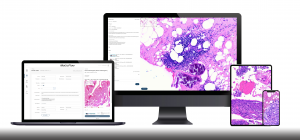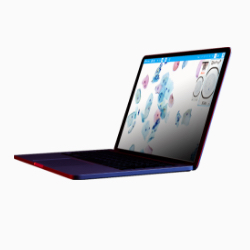130,000 to 1. That’s the estimated population-to-pathologist ratio in China, making for a pathology care gap of approximately 60,000 to 120,000 more practitioners needed to meet the patient load.
In the United States, the ratio is currently estimated to be about 17,500 to 1.
And in some of the most under-resourced countries in sub-Saharan Africa? That ratio rises to a million (yes, million) people per 1 pathologist.
Even more alarming, experts predict that this global pathology care gap will only widen in the coming decades. The math is simple: populations are growing, people are generally living longer, cancer rates are rising, and the pool of pathologists worldwide is not replenishing fast enough to replace retiring practitioners. With even labs from high-income countries self-reporting that they often do not have adequate staffing to meet demand, the global health burden that cancer poses in the twenty-first century is truly staggering.
Moreover, the unevenness of pathologist coverage means that areas with the highest share of the world’s disease burden correspondingly have the fewest resources with which to confront health crises.
Lack of access to preventative screenings, early diagnosis, and timely treatment all contribute to poor outcomes in low- and middle-income countries (LMICs) relative to their high-income counterparts. For instance, the five-year survival rate for a woman diagnosed with breast cancer in sub-Saharan is under 40%. In stark contrast, women in the United States have an over 90% five-year survival rate due in part to robust infrastructure for regular cancer screenings and access to specialist care.
While these numbers are certainly sobering, the hopeful news is that telemedicine innovations such as microscopy lab management software and digital slide scanners have tremendous potential to help lessen the pathology care gap. Remote scanning solutions can apportion the global disease burden more evenly between resourced and under-resourced areas. In fact, though digital transformations are often couched in the start-up language of tech “disruption,” the reality is that some of the most enthusiastic proponents of telepathology are not Silicon Valley types, but rather practitioners in LMIC regions who are already integrating telemedicine into their workflow and experiencing its practical benefits daily.
For example, Motic supports the ASCP’s Partners in Cancer Diagnosis and Treatment initiative, which connects clinicians in sub-Saharan Africa with their counterparts in American hospitals to provide expertise on pathology cases. By leveraging inexpensive whole slide imaging scanners and our cloud-based shared case management platform, these doctors are able to collaborate across thousands of miles to decrease diagnostic wait times and produce better patient outcomes in severely under-resourced areas.
In high-income countries, large hospital networks and rural pathology labs alike are also seeing the benefits of implementing telemedicine systems. The ability to request a second opinion without mailing slides, to diagnose frozen sections remotely, and to shrink or entirely delete the distances between labs are all tremendous developments that can considerably lessen pathologists’ workloads.
Such collaborations will become more common in the future, as clinicians worldwide take responsibility for increasing numbers of patients. Strides in digital pathology machine learning will create opportunities for pathologists to leverage AI in pathology pre-screening, freeing up more time for both routine and complicated cases. Far from putting doctors out of work, as many sci-fi aficionados might fear, AI will actually be a powerful ally in our global fight against disease.
It is clear that one of pathology’s greatest health challenges in the twenty-first century will be ensuring that every person, regardless of income or geography, can access timely and expert diagnostic care. With telemedicine, that fight is getting easier, one digital slide scan at a time.
To learn more about how Motic is leveraging digital pathology to address the disease burden in under-resourced areas around the world, please visit our Philanthropy page.






